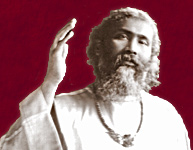Religious Gathekas(To be read at the Service of Universal Worship) Religious Gatheka Number 33
Moses, the most shining Prophet of the Old Testament gave to the world the divine Law, the ten Commandments, which in reality was the interpretation of the divine Law that he perceived, expressed in the words of those who stood before him at that time of the world's civilization. It is interesting to notice the Sufi saying which comes from the ages, which says: 'Be the followers of love, and forget all distinction, ' for in this path of spiritual attainment to claim that 'I am so and so' is meaningless. Moses was found by the river side by a Princess, who knew not what family he came from, or who was his Father and Mother. Only the name of God came to the mind of every thoughtful inquirer as to the Father and Mother of Moses. When people compare the teachings of different religions, and readily form their opinions upon them, they are often mistaken; it is premature to make such distinctions. There comes a stage in the evolution of an illuminated soul who begins to see the law hidden behind nature, the true psychology. To him the whole life reveals the secrets of its nature and character, and when he gives an interpretation of these secrets to others, they become limited, for they take the color of his own personality, and the form of the thought of those to whom the message is given. The story of Moses as told by Sufis is most interesting and helpful to the traveler on the path Moses has been the favorite character of the poets of Arabia and Persia, and in the poems of the Persian Sufis, Moses is often mentioned as Krishna is mentioned in the poetry of the Hindus. Moses was walking in the wilderness looking for some fire, he saw from a distance a smoke rising on the top of a mountain, so he climbed to the top of the mountain, in order to find that fire. But on arriving at the top of the mountain, he saw a glimpse of the lighting which was so powerful, that it went throughout his whole being. Moses fell down unconscious on the ground, and when he recovered his senses he found himself with illumination. From that time the Mount Sinai was the place where he often went and communicate with God. The story is very enlightening when one can think that it is possible that all the illumination that is desired can come to a soul in a moment. Many think that spiritual attainment can be achieved by a great labor; no, labor is necessary for material attainment, for spiritual attainment what one needs is the seeking soul like that of Moses. Moses falling down upon the ground may be interpreted as the Cross, which means: 'I am not, THOU art.' In order to be, one must pass a stage of being nothing. In the Sufi terms it is called fana. When one thinks 'I am not' (what I had always thought myself to be.) This is the true self-denial which the Hindus called laya, and in Buddhism the term annihilation. It is the annihilation of the false self which gives rise to the true self: once this is done, from that moment man approaches closer and closer to God, and stands face to face with his divine ideal, with whom he can communicate at every moment of his life. The law of God is endless, as limitless as God himself, and once the eye of the seeker penetrates through the veil that hangs before him, hiding from his eyes the real law of life, the mystery of the whole life manifests to him, and happiness and peace becomes his own, for they are the birthright of every soul.
|

